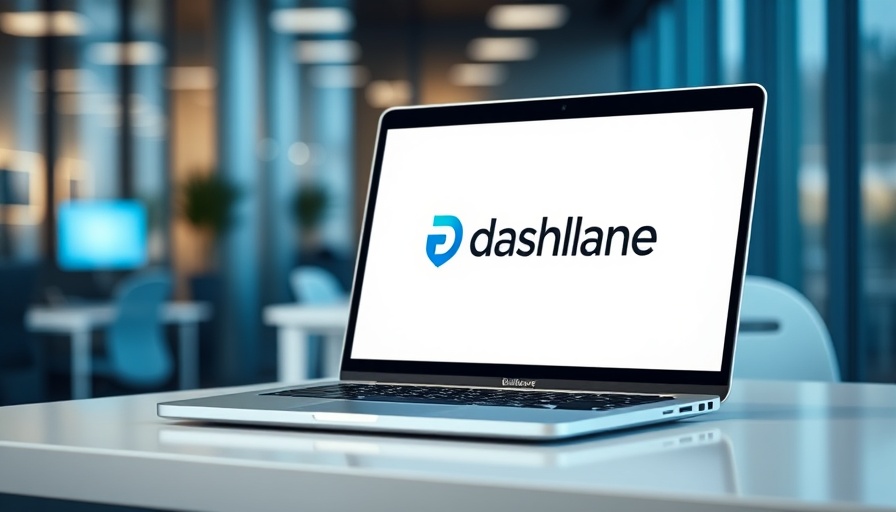
Step Into a Safer Online Experience: How to Use Dashlane
As the digital landscape rapidly evolves, safeguarding your online credentials has never been more essential. With cyber threats increasingly sophisticated, using a reliable password manager like Dashlane not only streamlines your password management but also enhances your overall security posture. This article delves into the impactful features of Dashlane and provides a comprehensive guide on how to set it up and utilize it effectively.
Understanding the Power of Dashlane: Why This Password Manager Stands Out
At its core, Dashlane is designed with simplicity and security in mind, catering to both individuals and businesses alike. Its zero-knowledge architecture ensures that only you can access your sensitive information, creating a virtually impenetrable barrier against cybercriminals. The app employs 256-bit AES encryption, regarded as one of the highest encryption standards, making it exceedingly difficult for unauthorized users to decrypt your credentials.
In addition to robust security features, Dashlane enhances user experience with functionalities such as:
- Easy password generation—create complex passwords automatically.
- Dark web monitoring—to alert you if your credentials are compromised online.
- Secure password sharing capabilities for teams and families.
All these features combined make Dashlane an essential tool for anyone concerned about their digital security.
Getting Started with Dashlane: A Step-by-Step Guide
Setting up Dashlane is straightforward. Follow these simple steps to protect your passwords effectively:
1. Choose Your Subscription Plan
Dashlane offers flexible subscription plans tailored for both personal and business use. The personal tier includes a Free plan, which allows up to 25 stored logins, the Premium plan, and a Friends and Family plan for shared access among multiple users. For businesses, various plans provide administrative tools that enhance team security.
2. Download the Dashlane Extension
To get started, download the Dashlane extension for your preferred browser from the Chrome Web Store, Safari, or Firefox. This integration allows for seamless autofill and password management as you navigate various websites.
3. Set Up Your Secure Account
Once the extension is installed, create your account by entering an email address and a strong master password. This master password is crucial, as it protects your encrypted vault, so make sure it’s complex and unique. You might want to use random word combinations or a password manager to generate this password for optimum security.
Maximizing Dashlane’s Features: Insights for Users
Using Dashlane effectively means utilizing its array of features to their fullest potential. Some valuable insights include:
Centralized Management for Businesses
Companies can leverage Dashlane's centralized management tools to oversee user permissions, monitor security activity, and generate detailed reports. This feature is invaluable for ensuring that only authorized personnel have access to sensitive information, thereby reducing the risk of breaches.
Regular Updates and Alerts
Enabling security alerts ensures that you are promptly notified of any attempts to breach your vault, allowing you to take immediate action. Regularly updating your passwords and leveraging Dashlane’s built-in password health dashboard can enhance your security even further.
Utilizing Dark Web Monitoring
With data breaches becoming a common threat, Dashlane’s dark web monitoring serves as a proactive measure. This feature scans for any exposed credentials linked to your email and alerts you if your data is compromised, providing peace of mind in today’s digital atmosphere.
FAQs About Dashlane: What You Need to Know
As with any software, some questions are bound to arise. Here are some frequently asked queries to clarify your experience with Dashlane:
- Is Dashlane Free? While there is a free plan available, it is limited to 25 stored passwords. For those needing more flexibility, the premium plans are worth the investment for robust functionalities.
- How Does Syncing Work? Dashlane syncs your data across all devices, provided you're connected to the internet. This feature ensures that you always have access to your passwords wherever you are.
- Can I share passwords securely? Yes! Dashlane offers secure sharing options, which are essential for teams to collaborate safely without exposing sensitive data.
By familiarizing yourself with Dashlane's capabilities and best practices, you ensure that your online presence remains secure against any potential threats.
Take Control of Your Digital Security Today!
In a world where data breaches are a daily reality, utilizing a password manager like Dashlane is not just recommended—it's essential. By following this guide, you can enjoy the seamless experience of managing your passwords securely. Don't let your online life be at risk. Start experiencing the benefits of Dashlane today!
 Add Row
Add Row  Add
Add 




Write A Comment